My Final Project
I would like to briefly talk about the final project that I would like to create through this course.
Background
Here, I would like to introduce my work.This instrument is inspired by the South American ethnic instrument“Asalato” and has been designed to be 3D-printable.

I have been creating musical instruments under the theme of “Digital Ethnic Instruments.I have made the design process and 3D data available on an open platform so that anyone can create it freely.
Additionally, this instrument is designed using “Grasshopper,” allowing users to input parameters and generate instruments of various sizes.Furthermore, by placing locally sourced materials inside the instrument, the sound can be altered, connecting it to a more regionally rooted approach to craftsmanship.
City Instruments
In this project, I am envisioning the following concept:
When thinking about ethnic instruments, I believe that incorporating elements unique to the land and culture is essential. My goal is to create an instrument that naturally emerges from the cultural background of a specific place. Looking around the city, I often notice manholes.
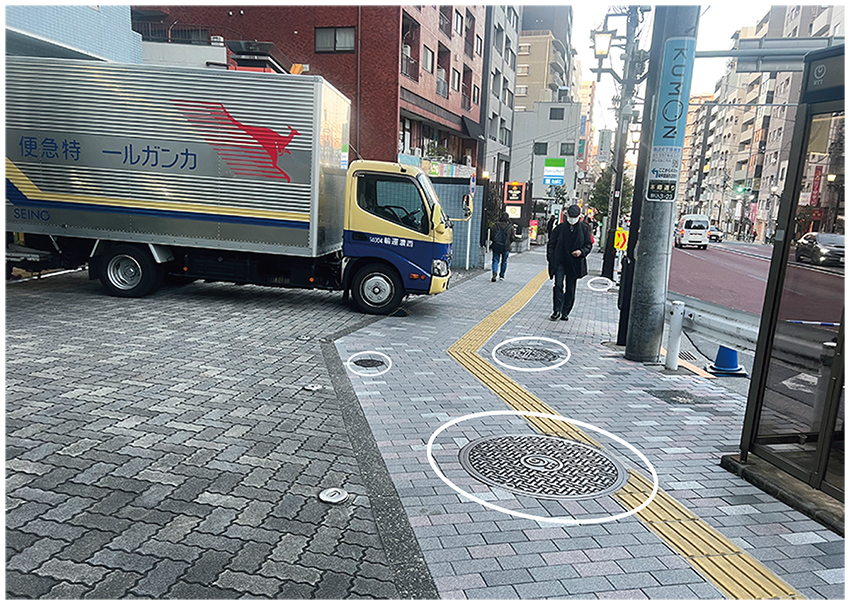
They exist everywhere in the world.
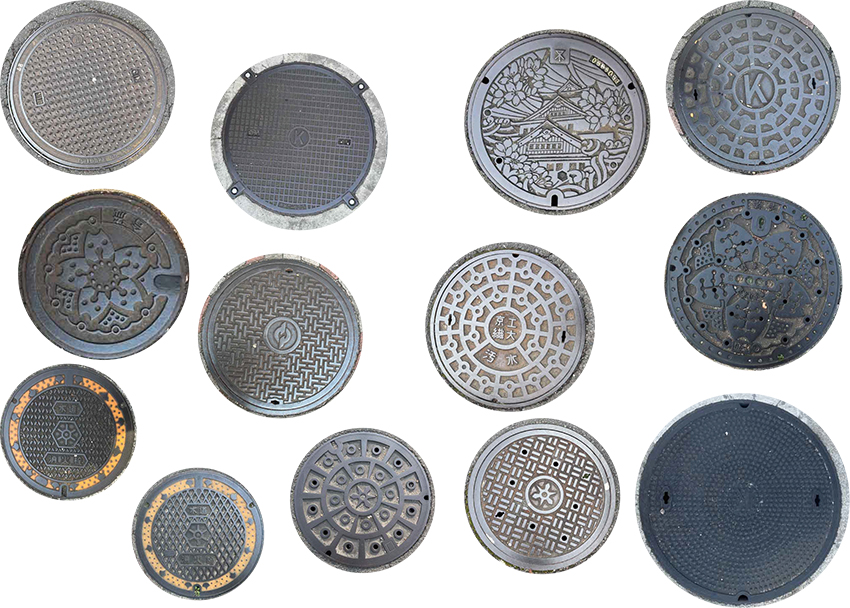
One day, while observing them, I suddenly thought: “Their shape resembles a musical instrument.” Wouldn’t it be interesting if they could produce sounds like an electronic instrument? What if those sounds were sampled from the city itself? And what if the instrument was made using urban waste, helping to clean up the city? These are the ideas I want to bring to life.

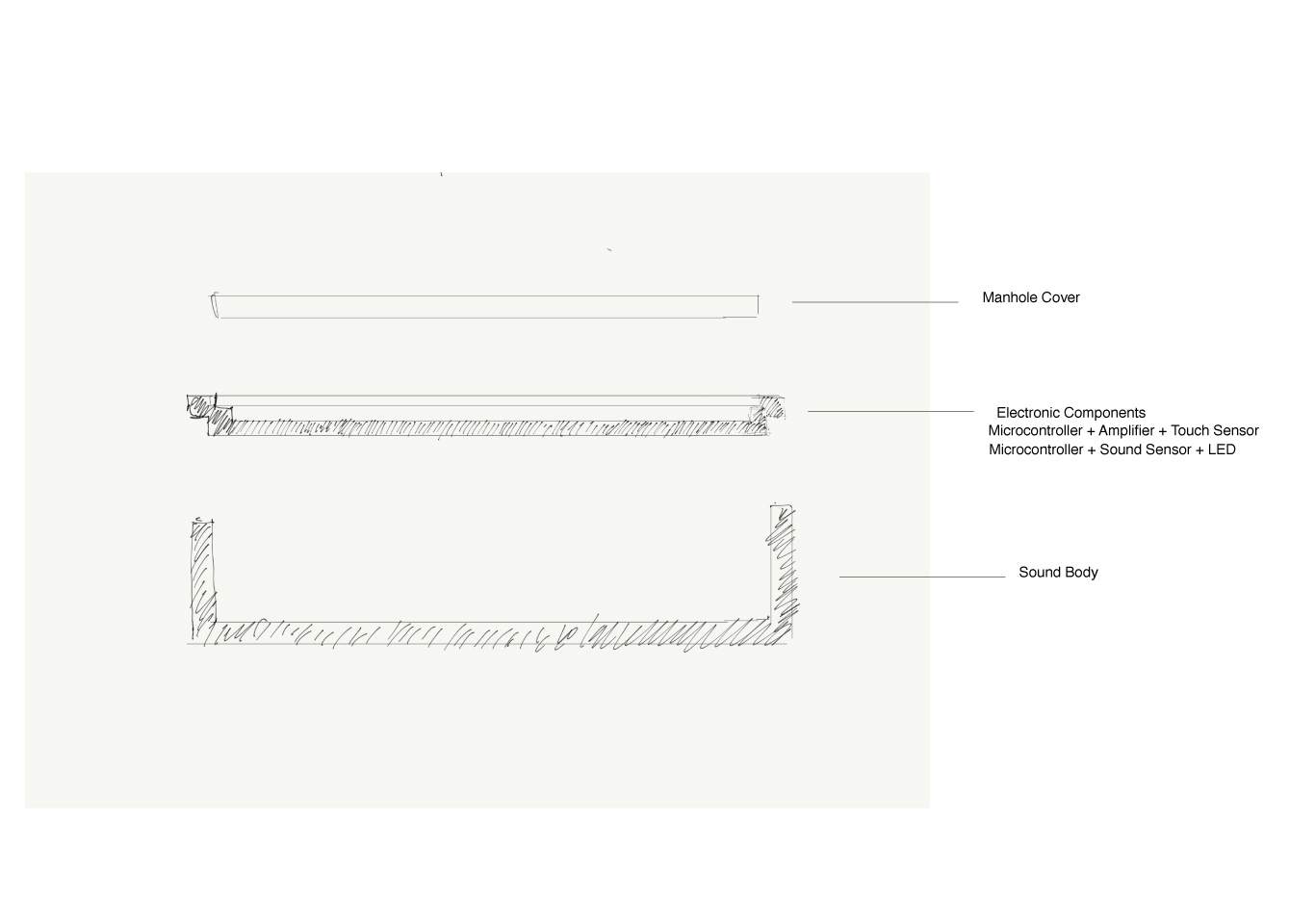
This electronic instrument is made from the shape of a real manhole cover. Touch sensors are placed to match the raised patterns. They allow the user to play urban sounds recorded during fieldwork. The sound body is made from crushed urban waste materials.
① Fieldwork
I chose Nakatsu, Osaka City, where I live, as the target area for this project.
・Manhole Exploration
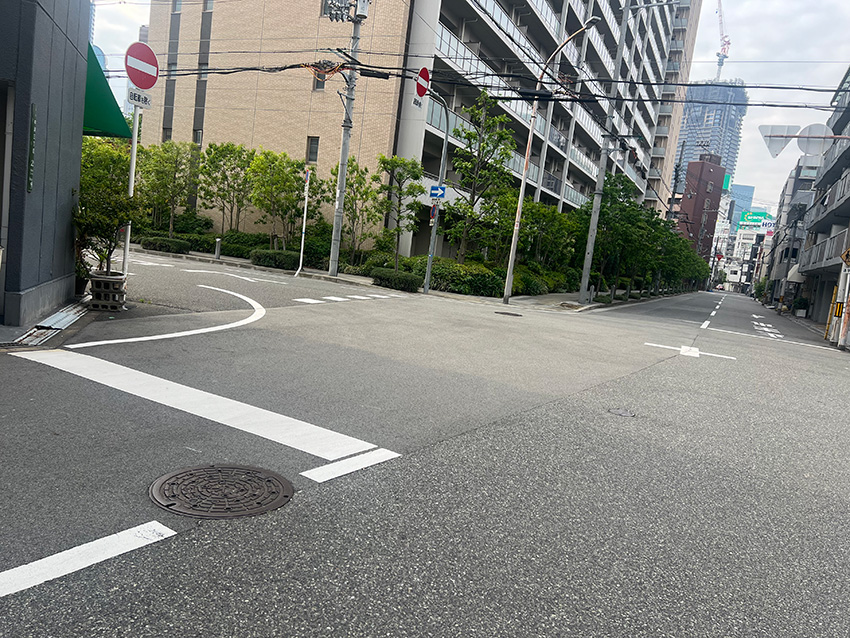
First, I searched for a manhole whose silhouette could inspire the design of my instrument.
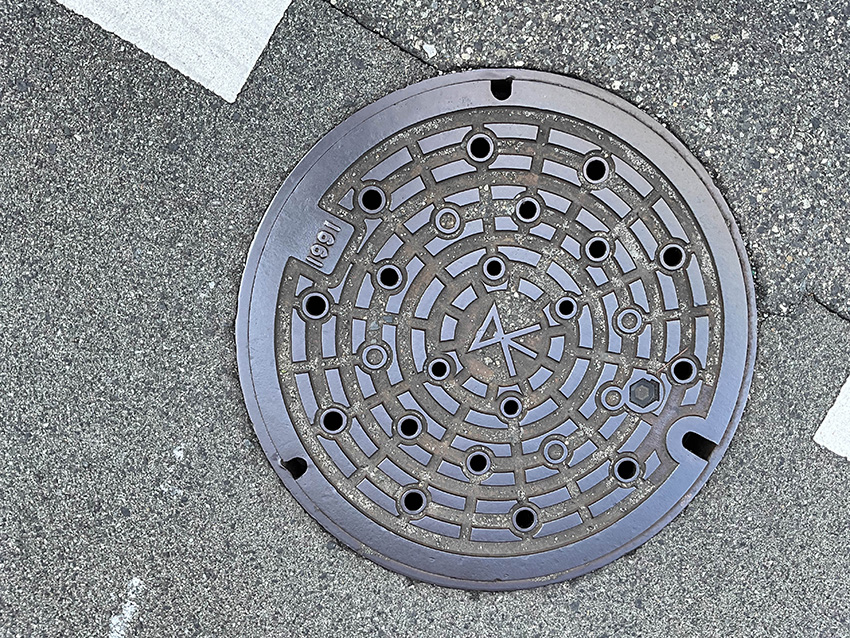
I chose this manhole. I took a photo and archived it.
At the same time, I noticed many plastic bottles littered on the street. I decided to use them to make the body of the instrument.
・Sound Collection
Equipment specifications

I used a recorder to collect environmental sounds from the city.
I was surprised by the rich variety of sounds—traffic, trains, parks, restaurants, schools—mixed with artificial and natural sounds.
② Design
・2D Design
Software
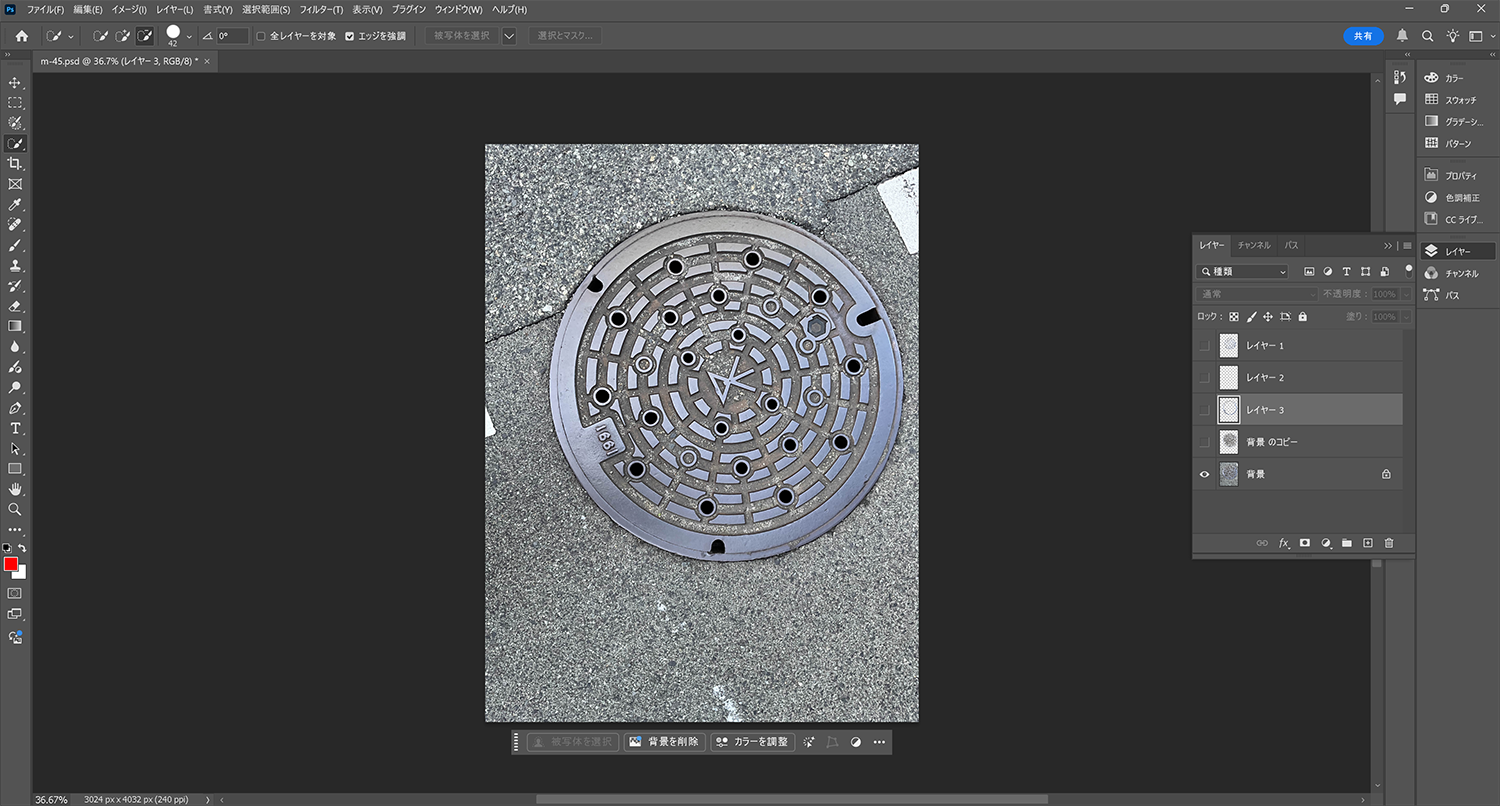
I imported a photo of the manhole into Photoshop, removed the background, and extracted the outline.

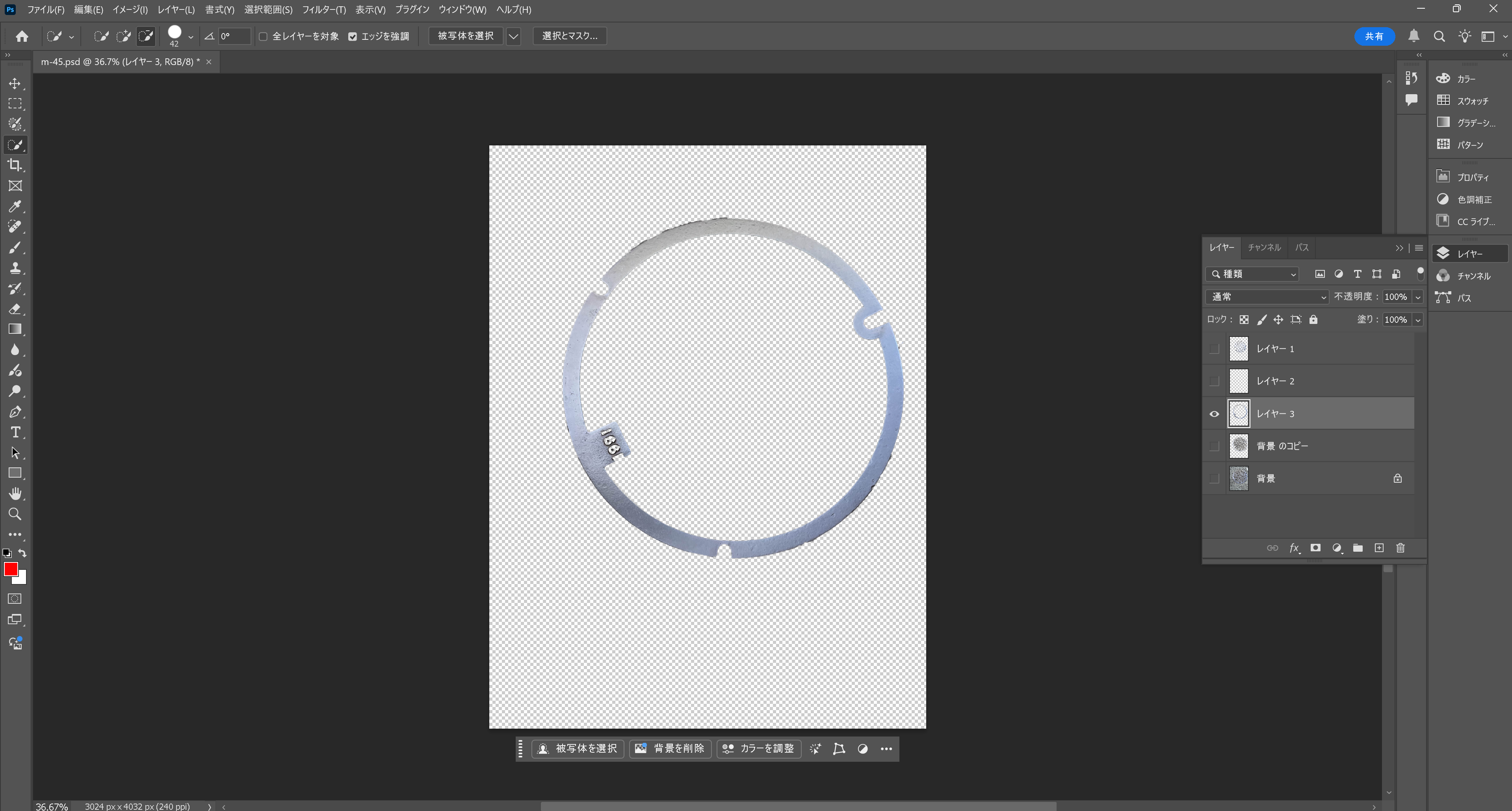
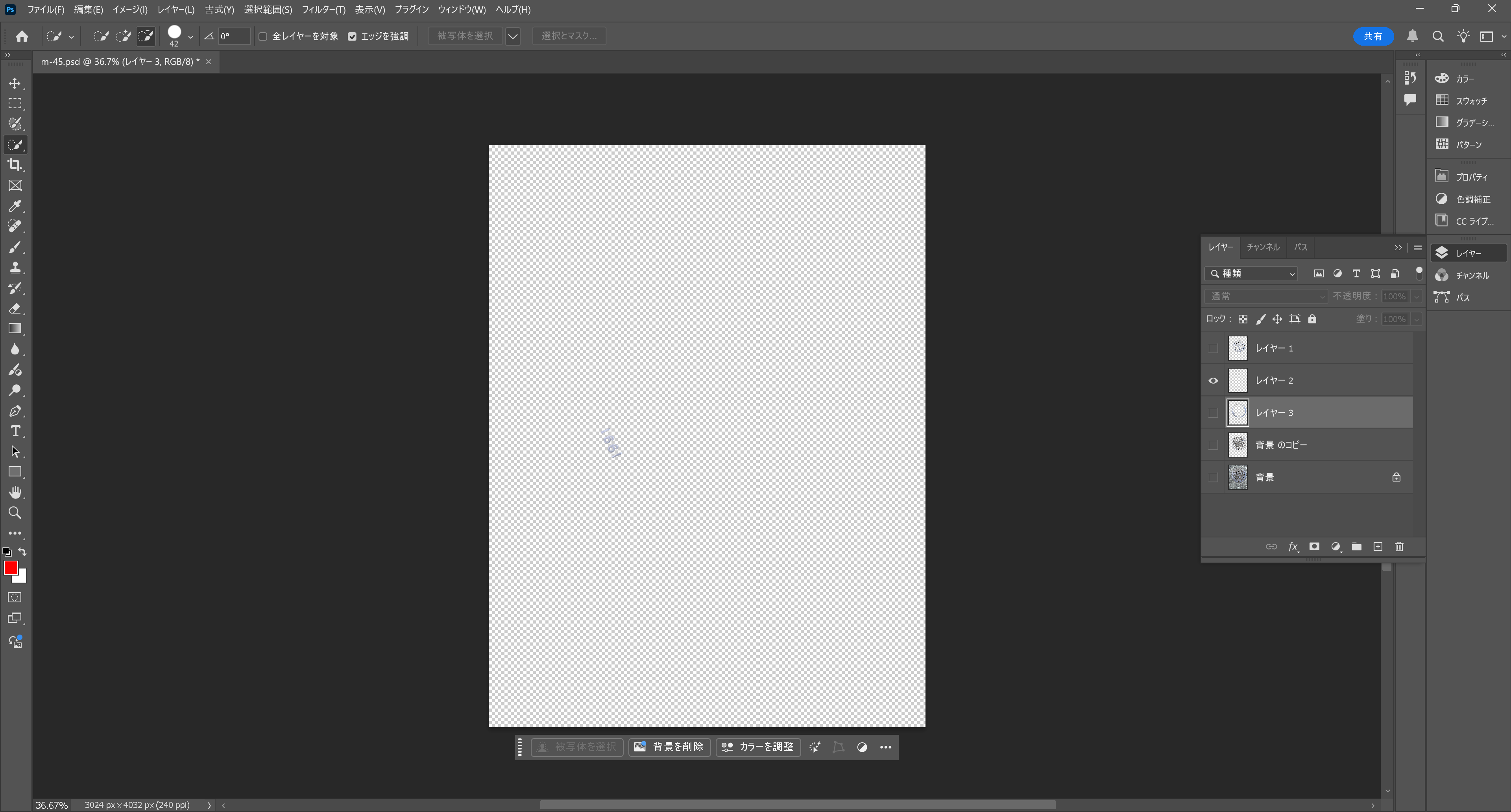
I created a working path for the inner outline and exported it as vector data.
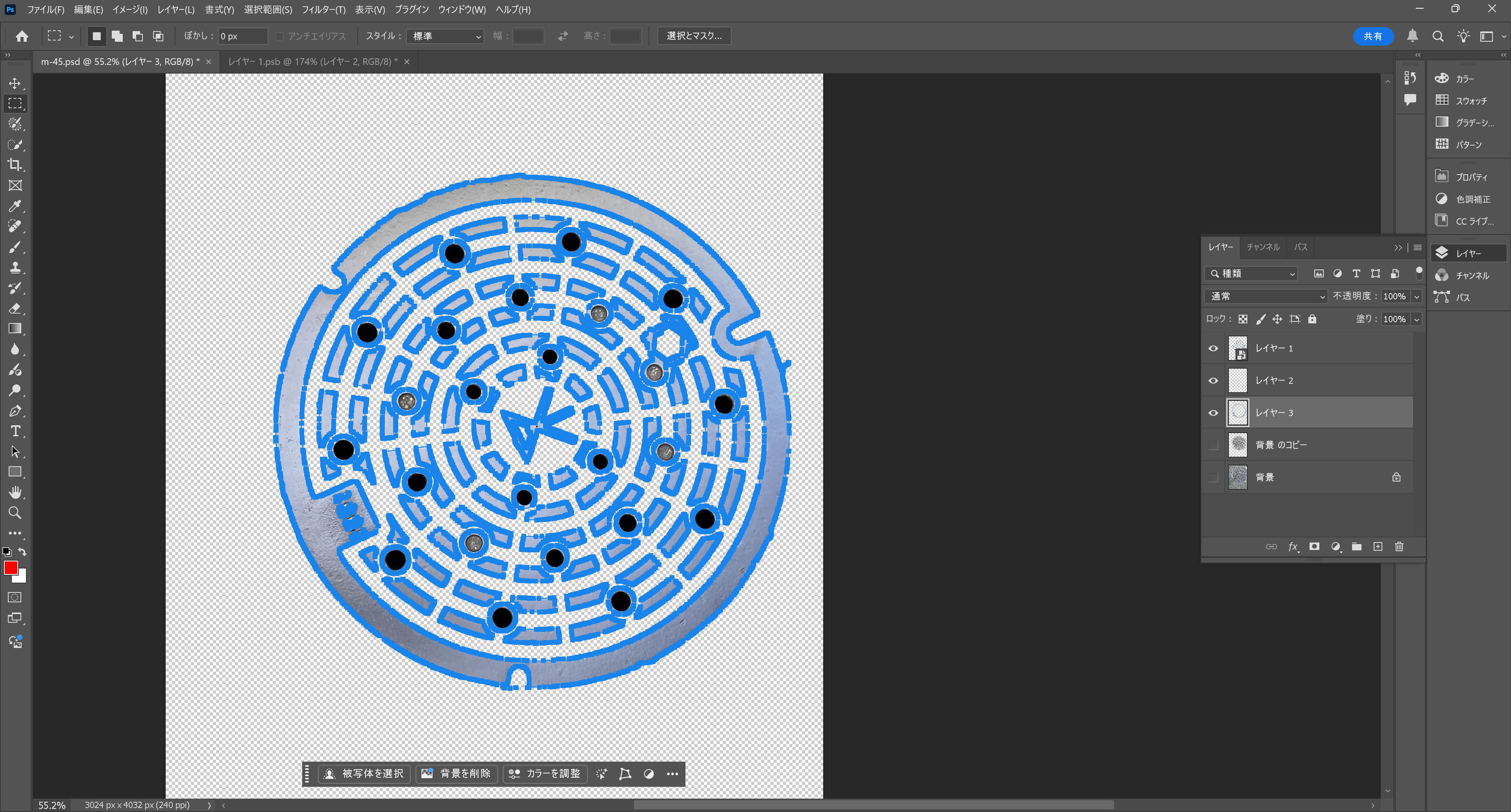
I used the auto-selection tool to select the raised parts of the manhole and separated them into layers.

In Illustrator, I refined the jagged outlines.
・3D Design
Software
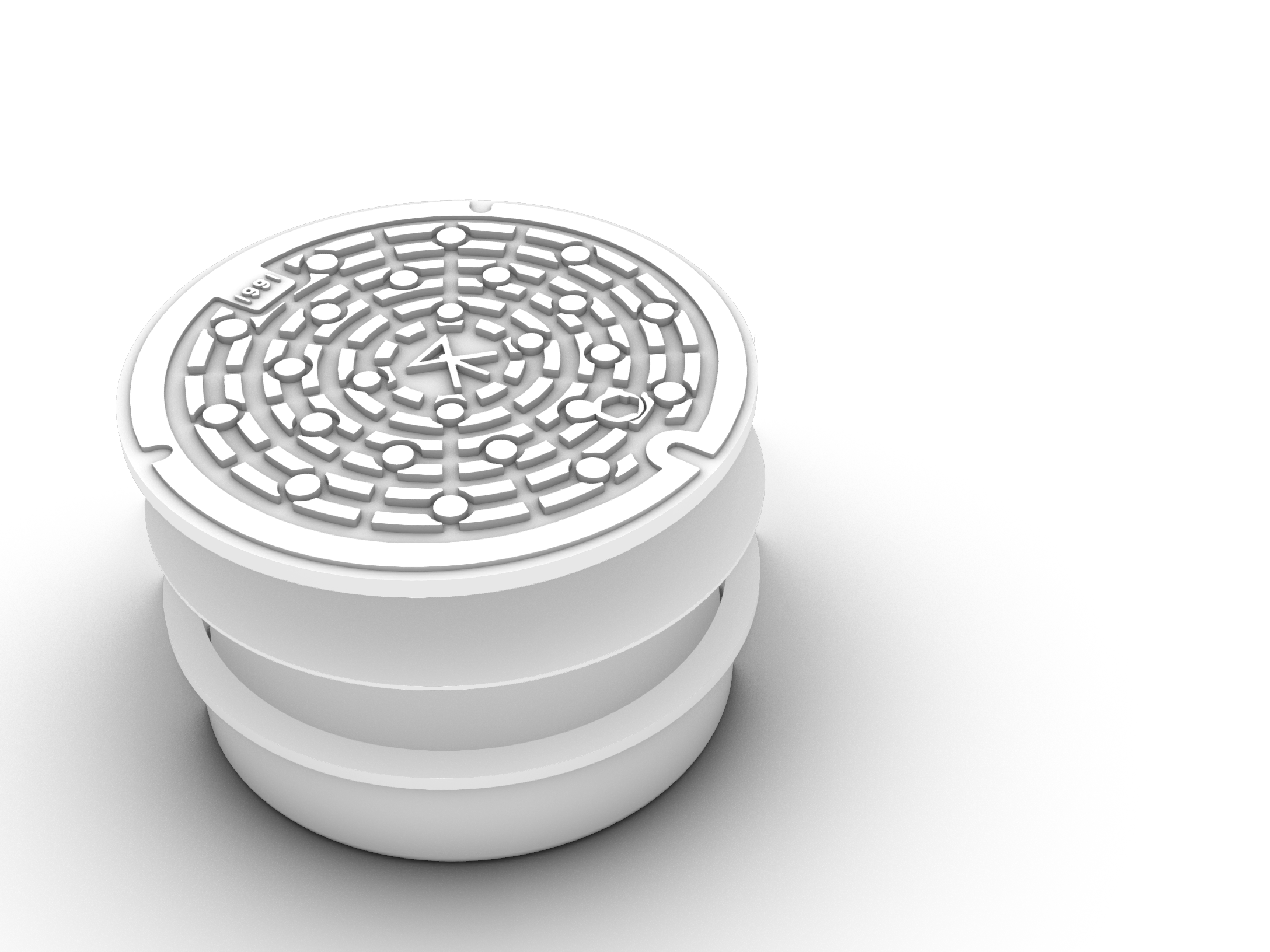
I used Rhinoceros to design the entire structure.
I avoided simplifying the lines into basic shapes, trying to stay true to the original photo of the manhole.

I adjusted the size so that it would fit inside a 320mm diameter circle, making it easy to use as an instrument.
③ Production
・Manhole Cover
Equipment specifications
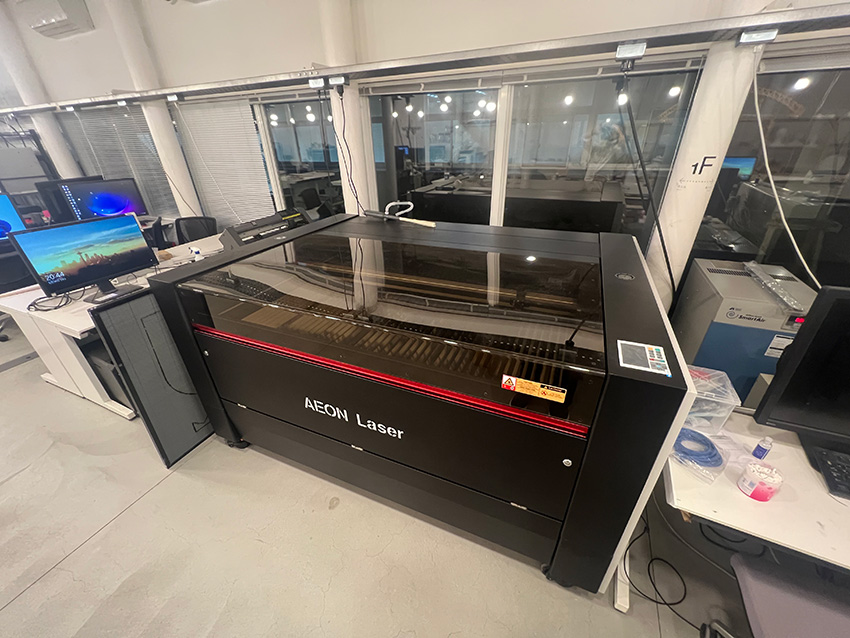
Materials
- MDF (10mm)
- MDF (2.5mm)
- Plywood (5.5mm)
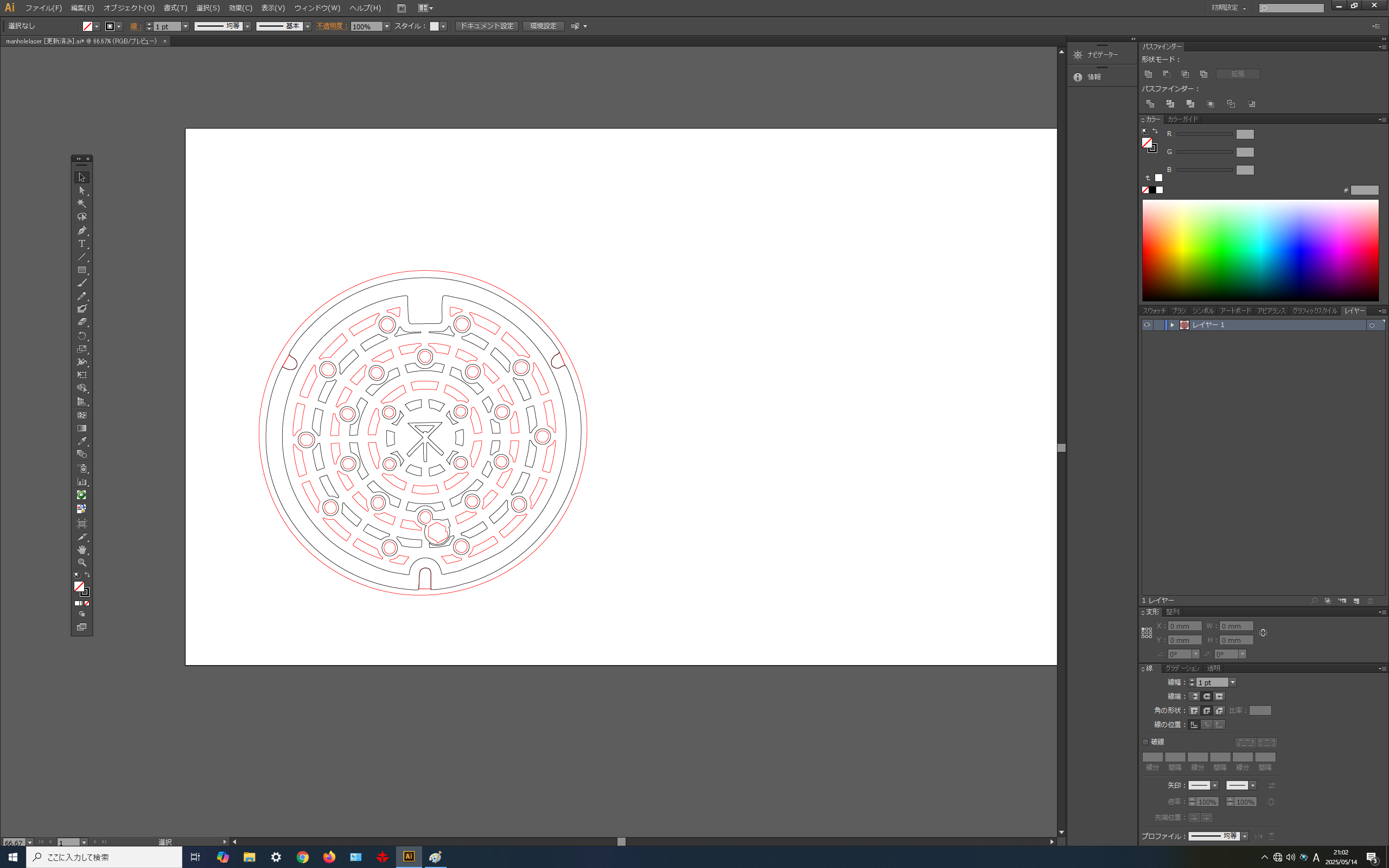
Three types of materials with different thicknesses are used. I created cutting data for the laser cutter.Each cut shape is slightly different, so I added numbers to identify each part after cutting.
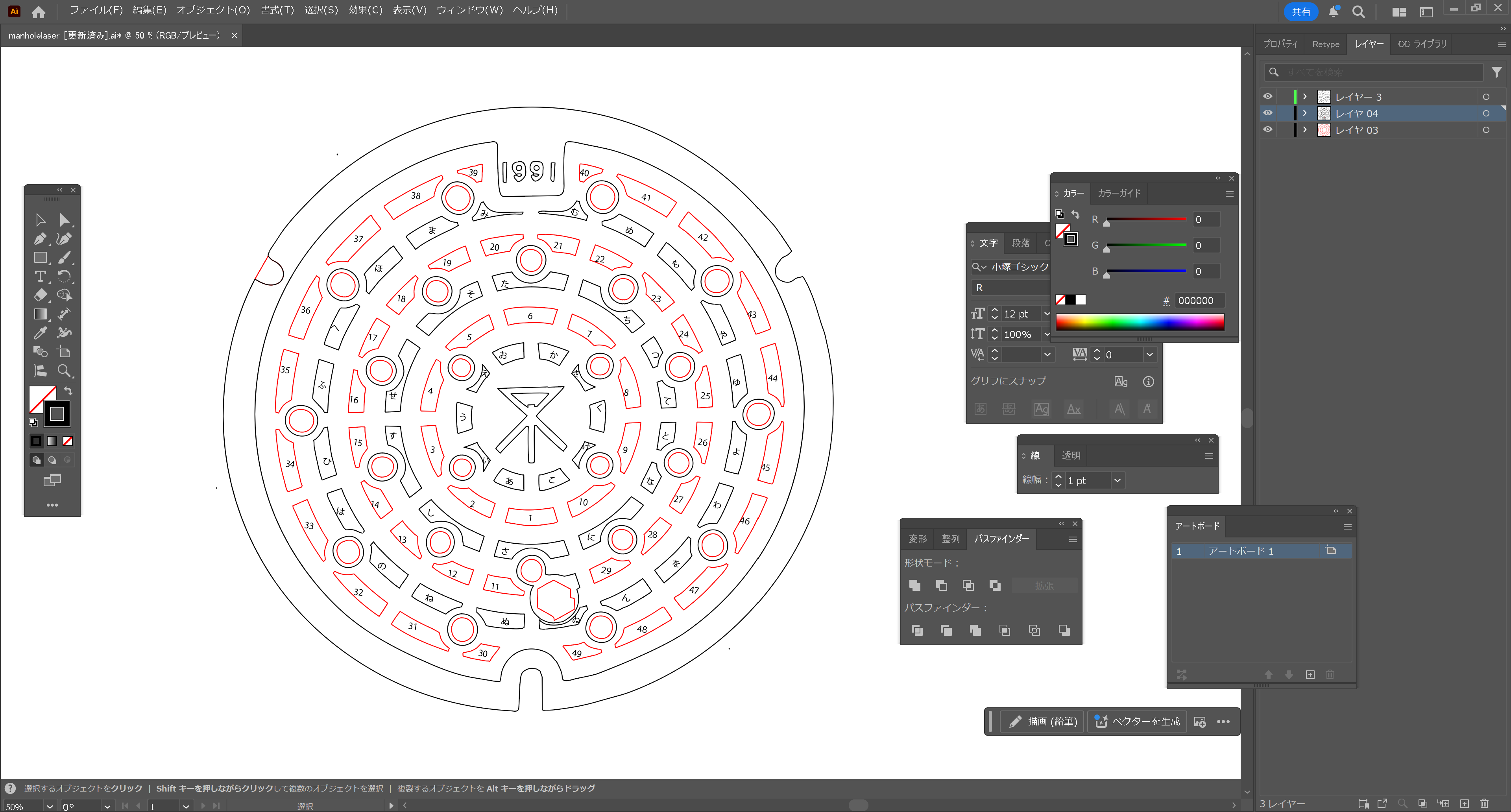
To visualize where each part should be placed, I added marking lines. This was done by changing the stroke colors in Illustrator.
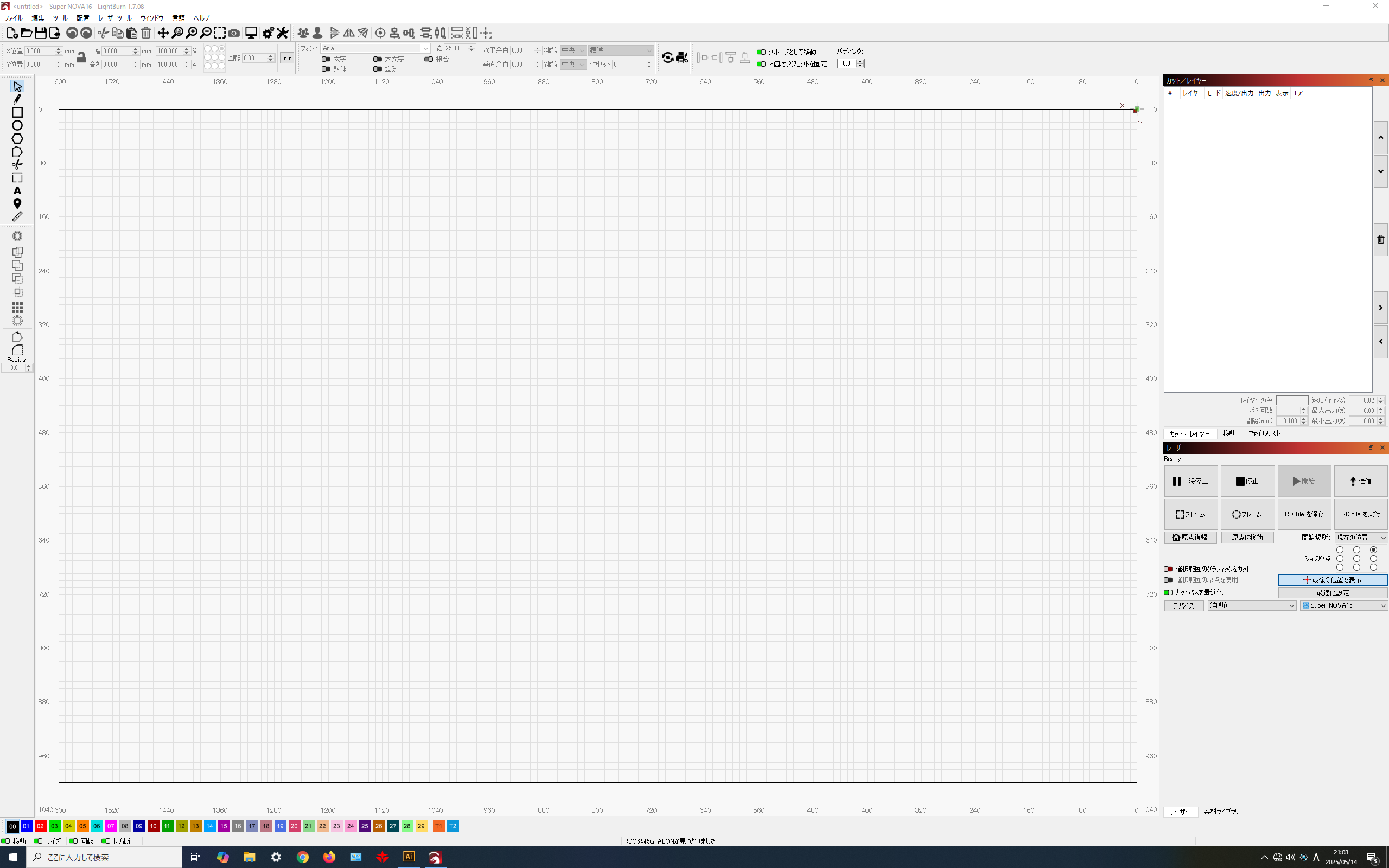
I used LightBurn software with the laser cutter.
I made small test squares and checked the parameters for cutting and engraving
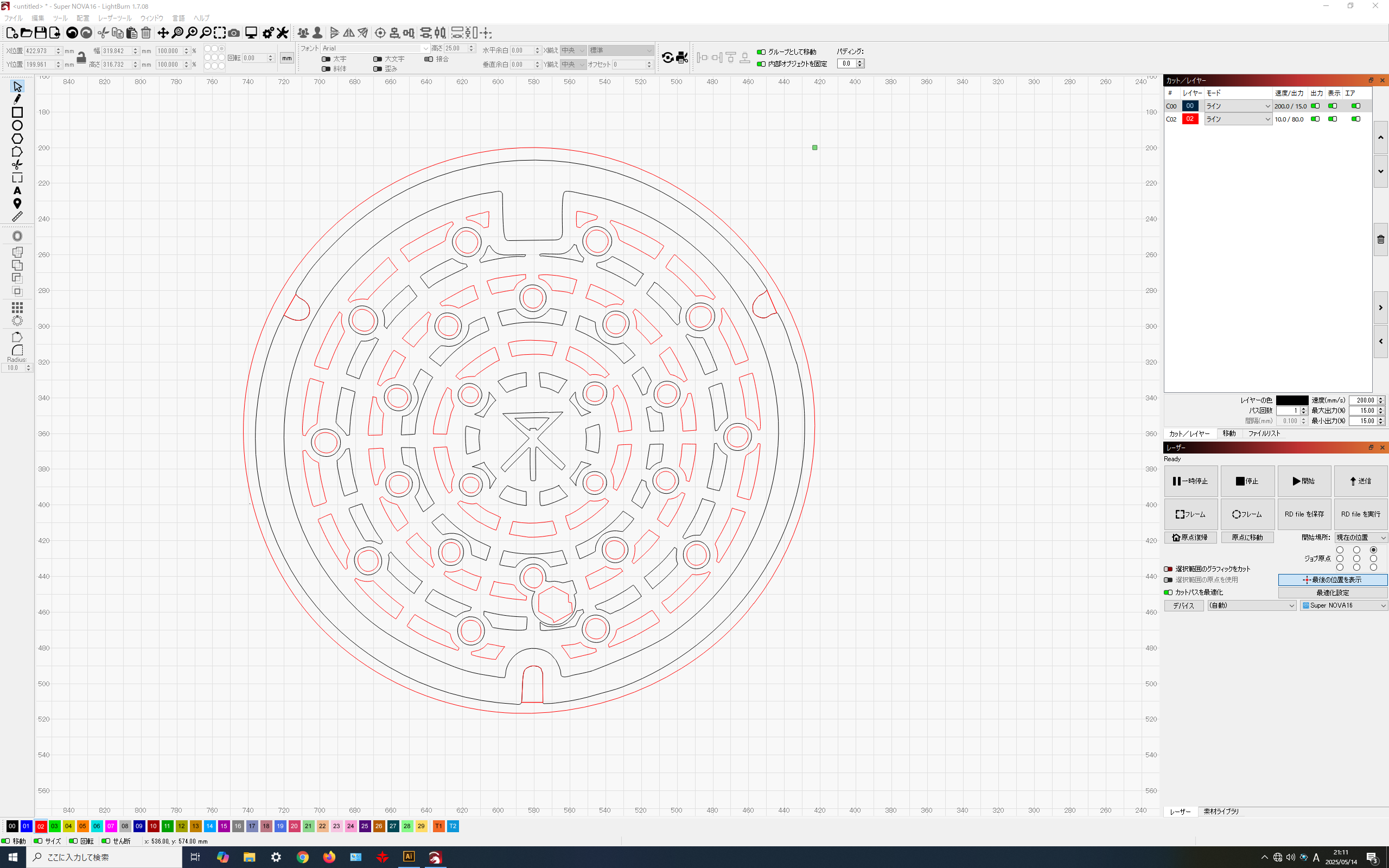
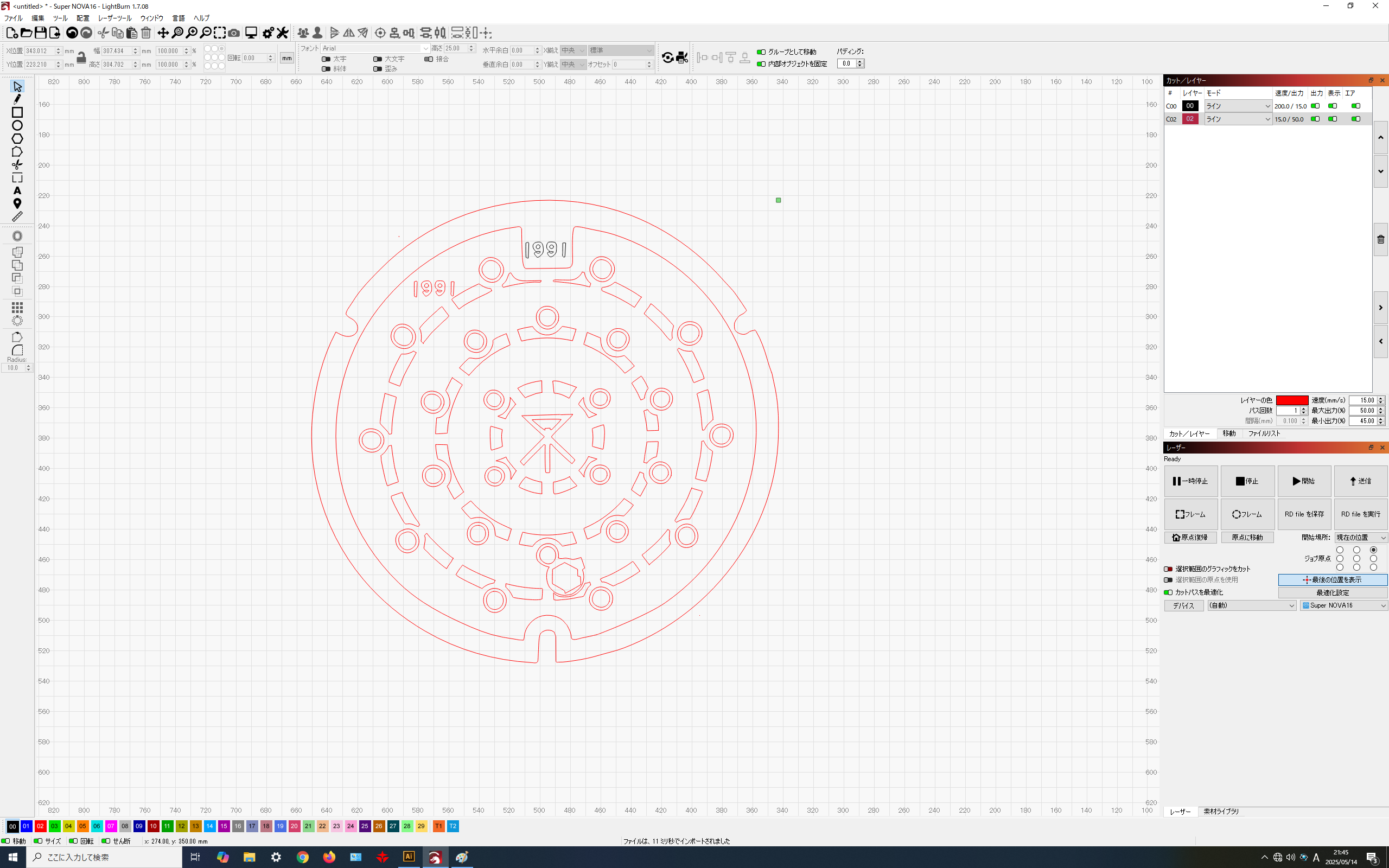
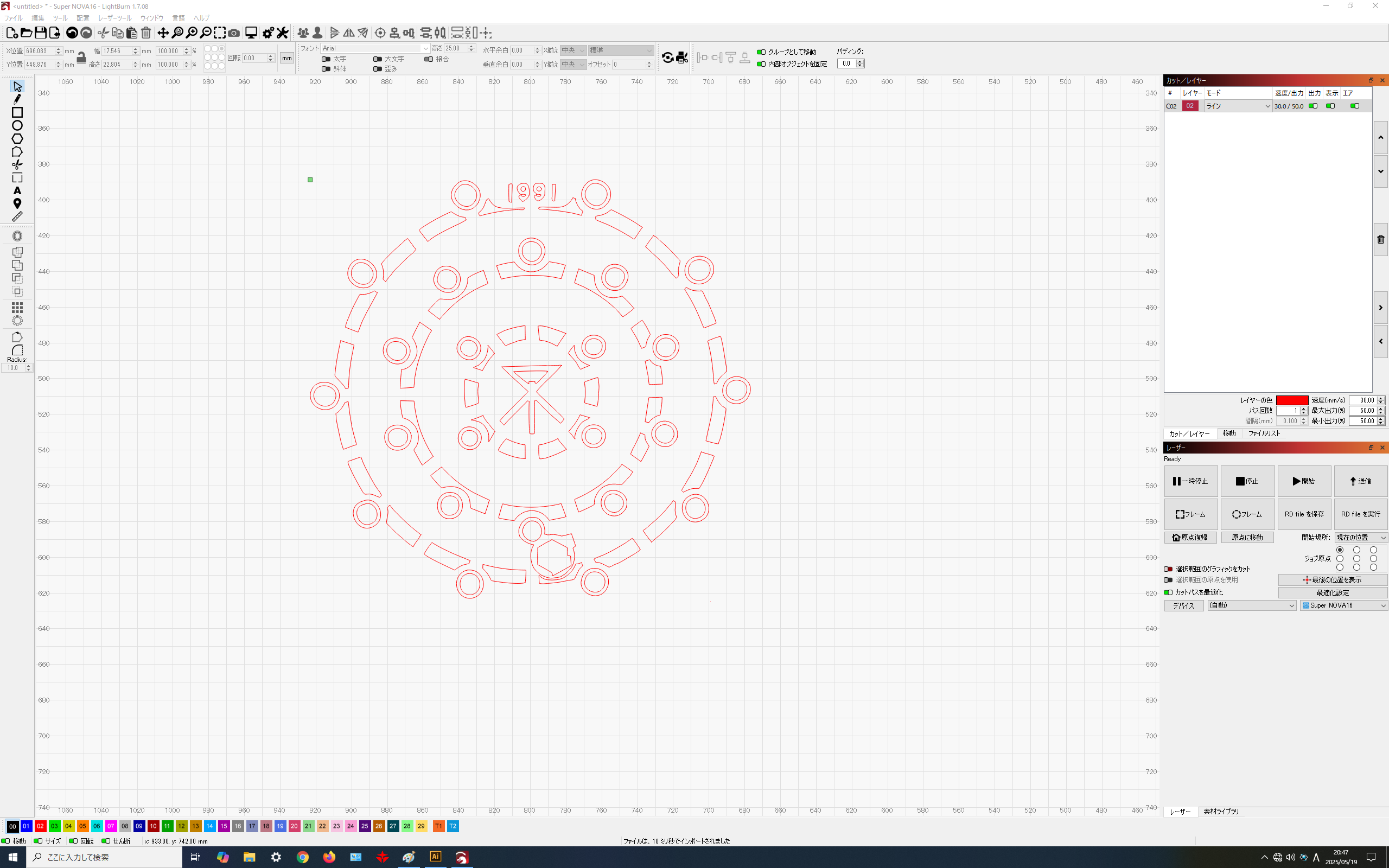
After confirming the settings, I started full production. Some parts made with 5.5mm plywood were not used in the final build.
I used the laser cutter to cut the parts.
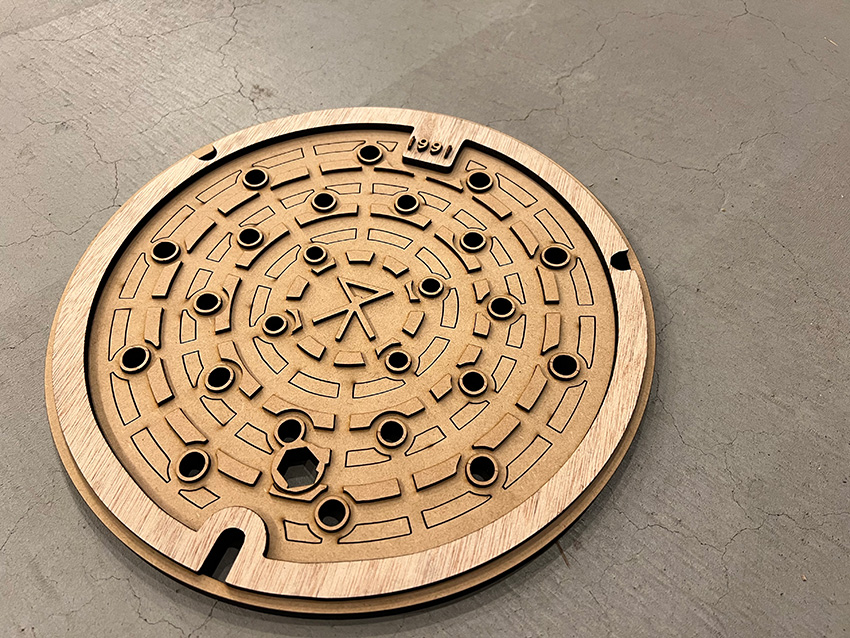
I glued the parts together.
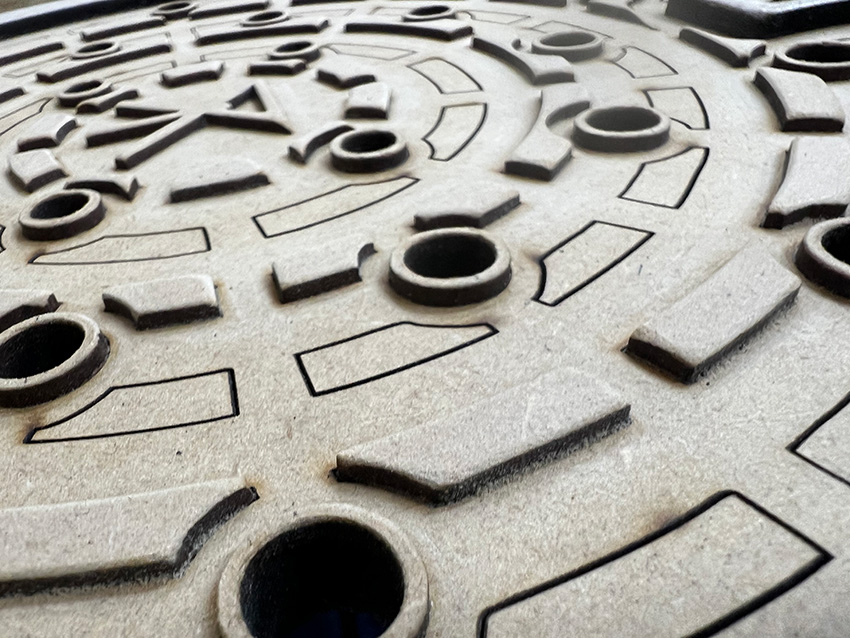
The corners were carefully filed to create a softer, rounded edge.
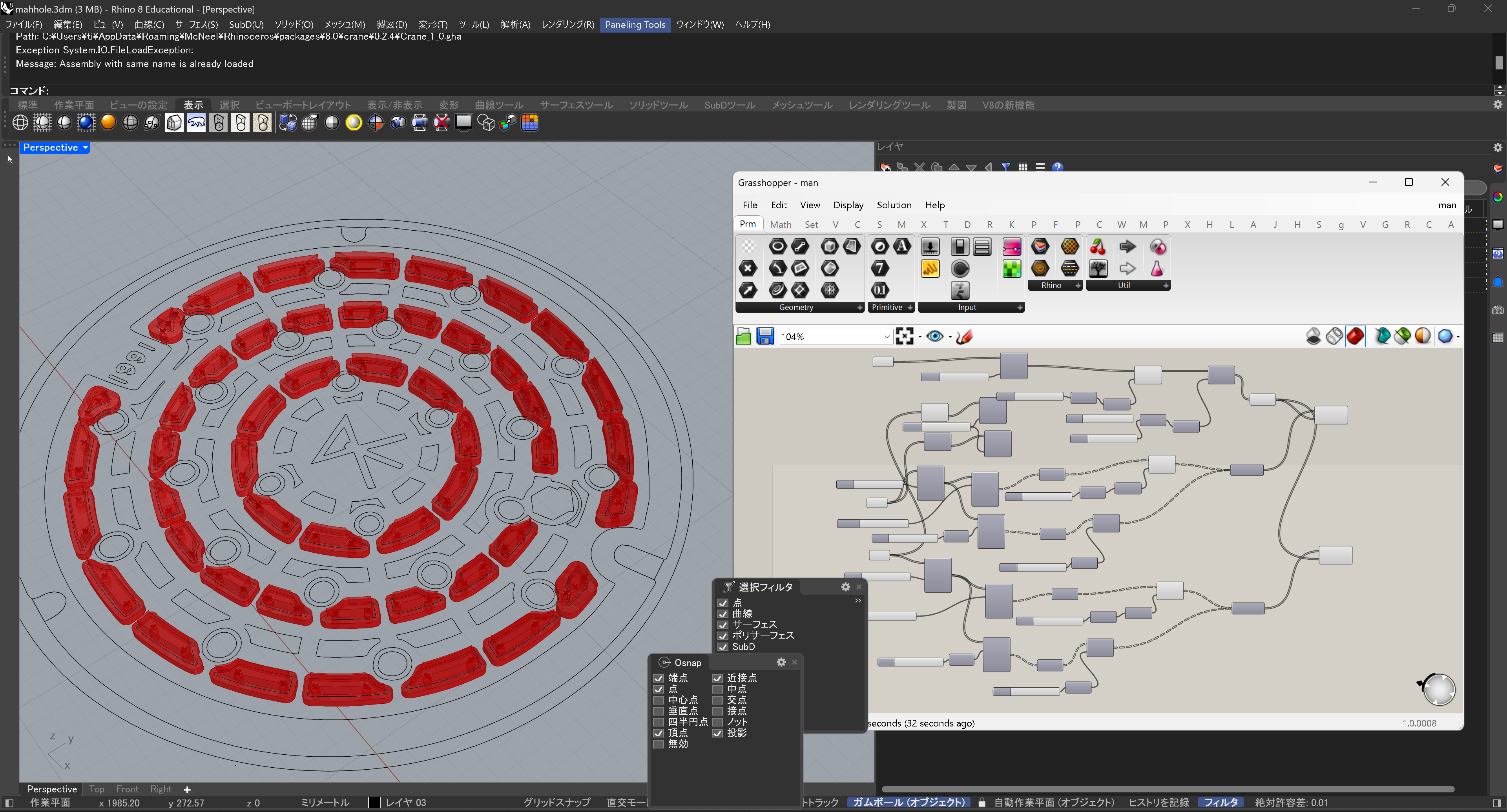
I designed the button using Grasshopper.
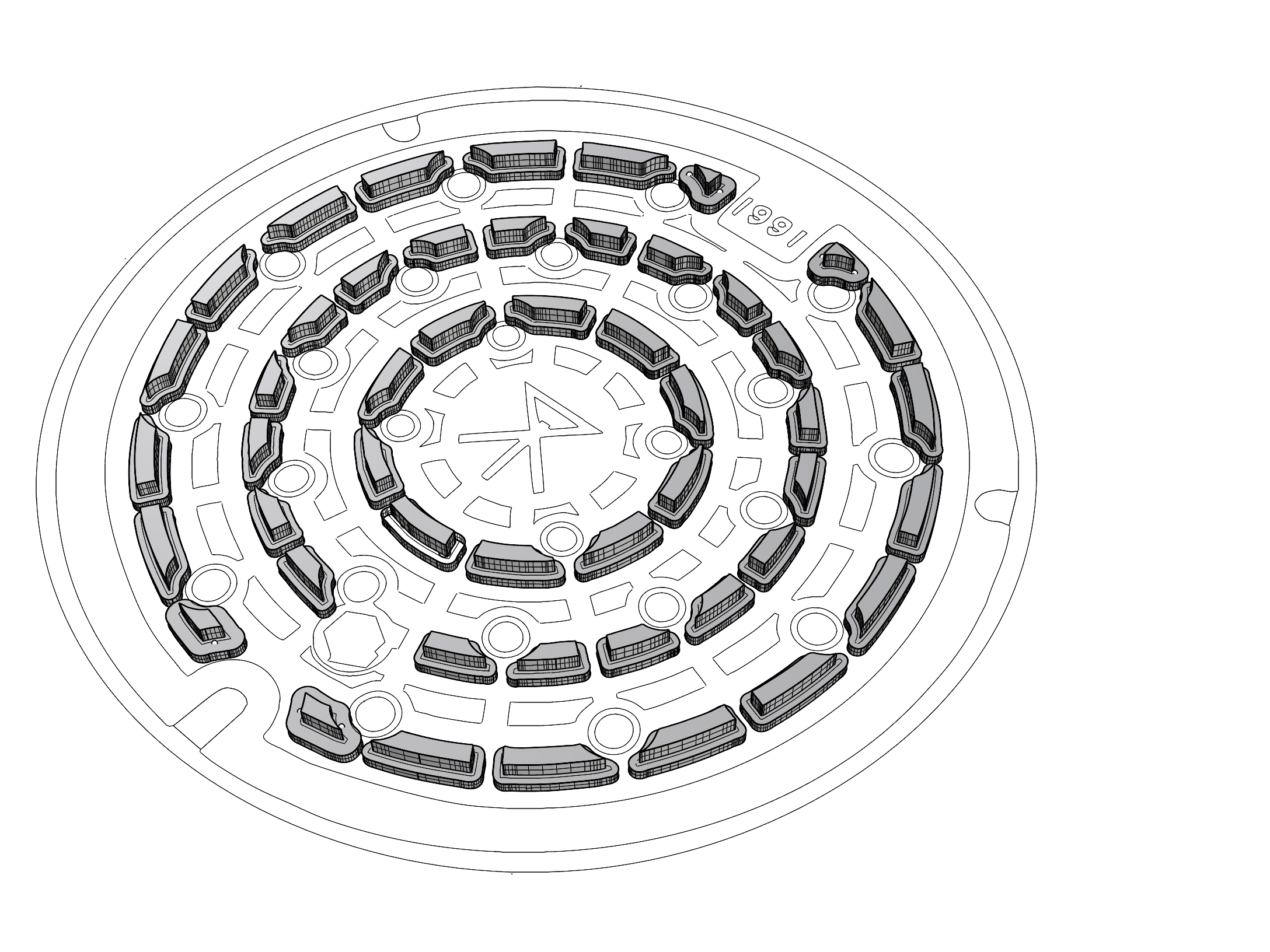
An offset was added to create a slight catch when the button returns after being pressed.
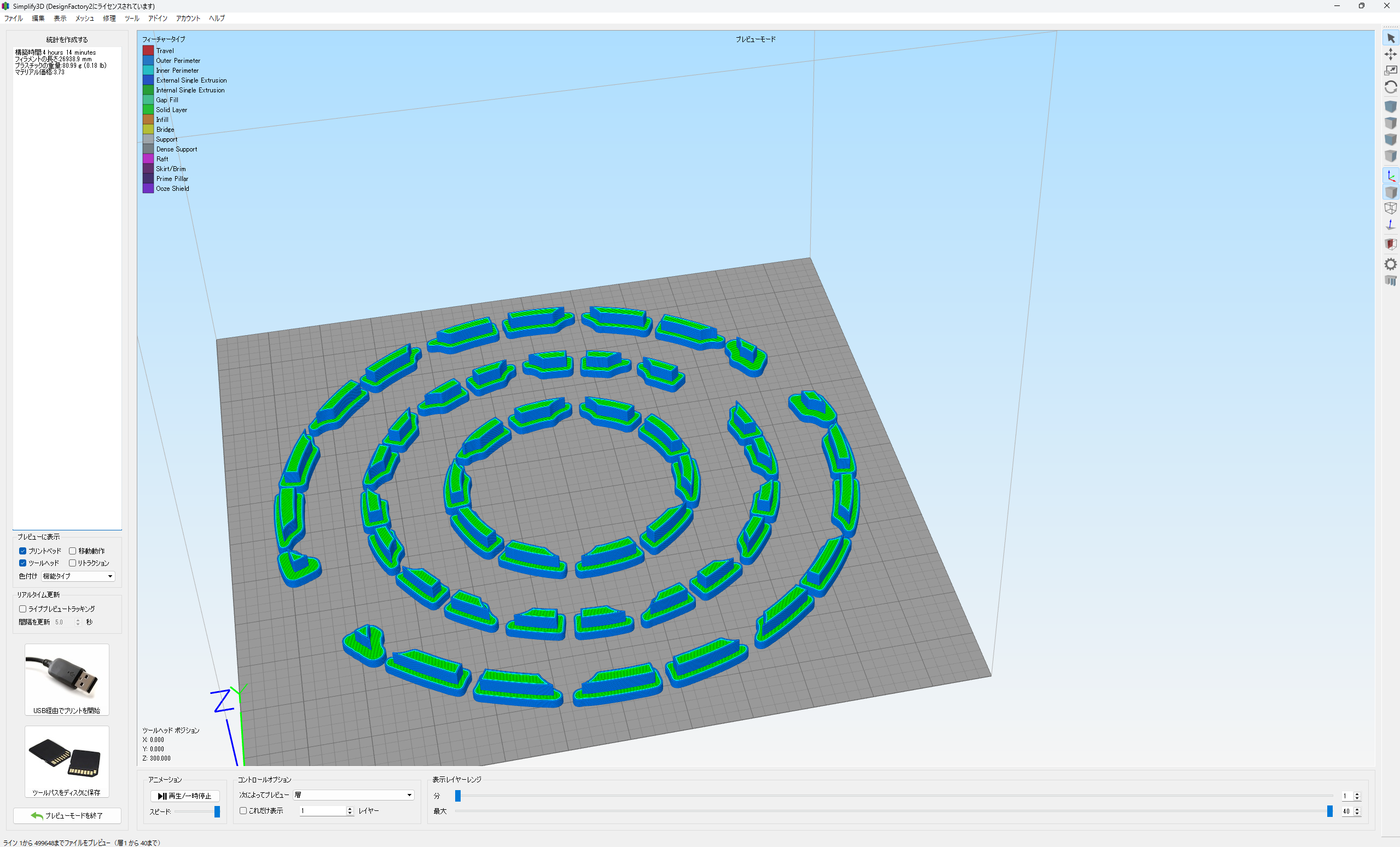
In order to preserve the exact layout for later reference on the manhole surface, the parts were printed in their original positions.
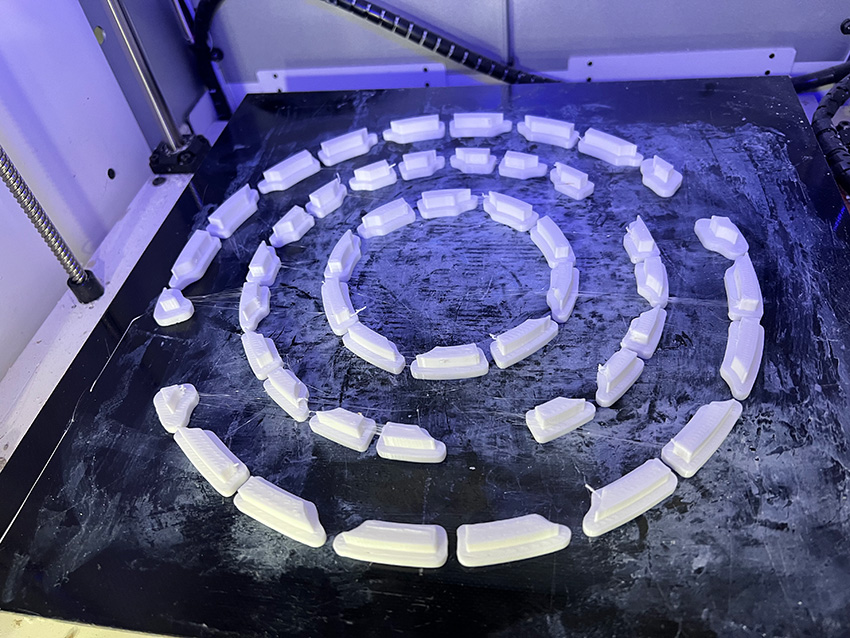
I used an FDM 3D printer to print the object.
・Sound Body
made a mold, filled it with a mixture of urban waste and resin, and demolded it after curing.
Details are described in the assignment for Week 13.